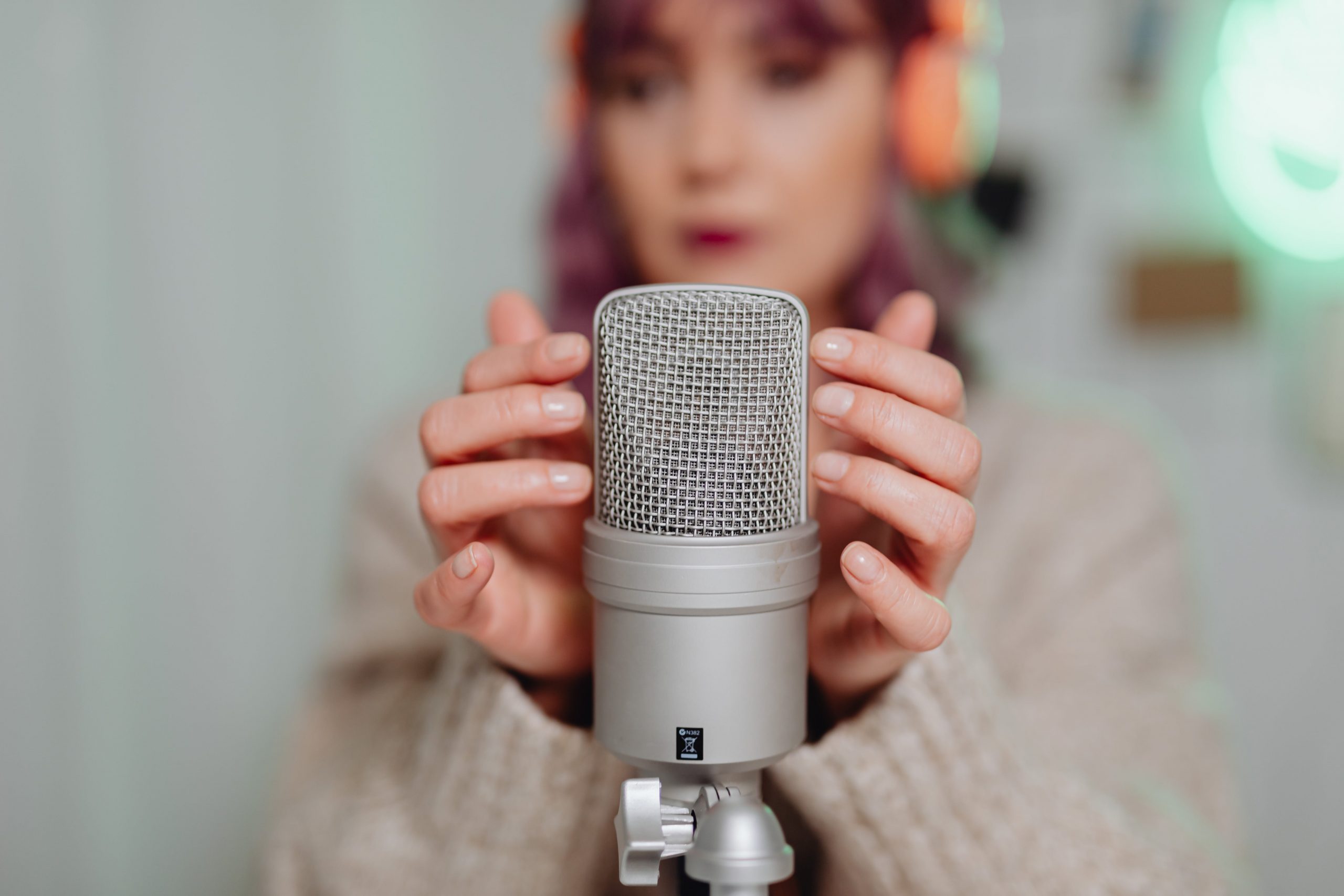Living in turbulent times has caused a collective mental health decline. Various financial, economic and medical factors have shaken the world—from a global pandemic to wars and protests, from social isolation to inflation.
In October 2022 CNN released an article stating that at least 90 per cent of adults in the United States can confirm having mental health issues. Recent European research, conducted in the summer of 2023, states that 1 in 2 people over the period of 12 months has shown signs of depressiveness or anxiety.
The stressful uneasiness has encouraged people to turn to various relaxation techniques and activities. Some of these unorthodox practices include ASMR, which stands for “Autonomous Sensory Meridian Response”.
To put it simply—it is a collection of various sounds and noises that create a tingly feeling in one’s brain and body and might help the person feel more at ease. There have been several attempts to analyze this phenomenon from a scientific perspective, yet the non-anecdotal proof is scarce.
Nevertheless, people share their experiences on various social media platforms that it has helped them cope with the personal struggles they’re dealing with. So is ASMR truly a pleasure or rather a myth? In this article, we will try to expose the different sides of this audial sensation. We will try to tap into the minds of the creatives behind this idea, as well as the users acknowledging ASMR as the remedy against their hardships.
Is science involved in ASMR?
Even though we have previously revealed what stands behind these four letters, as scientific as it may seem, the research on this sensation is still ongoing. How can so many people claim that it helps them, yet the research done in the field of ASMR is scarce? Nevertheless, the extent of articles on this matter has seen an increase after the world got into lockdown.
Steven Novella, Associate Professor of Neurology at the Yale School of Medicine, says in his blog that ASMR could be seen as a type of seizure as seizures can be triggered by sounds and some of them can even be pleasant[1].
Thomas R. Swart et al. in the article “ASMR amplifies low frequency and reduces high frequency oscillations”[2] state that they have experimented with a group of people, who watched ASMR videos, while their brains were tested with EEG.
The results showed that ASMR has an enduring impact on different areas of the brain and oscillatory capacities, including evidence for extended relaxation that could be considered useful for therapeutic practices.
Sending shivers down your spine vs. being addicted to placebo
There are many different types of ASMR videos, but nowadays most of them include thematic content. From Victorian tea houses or SPA salon setups to medical-style examinations or miscellaneous household appliance noises. The duration of the videos averages from 30 to 50 minutes, but some of them might even be two hours long.
In this case, it should be stressed that sitting in a rigid position is bad for the spine; also prolonged screen observation can cause eye strain and even headaches. You don’t need medical proof for that—I believe most of us have felt what it’s like to stand up from a chair after sitting on it for hours while doing something attentive on your computer.
The situation is quite an oxymoron as too much screen time should be avoided, yet these videos tempt you by promising to reduce stress and anxiety. Is sacrificing your physical health worth saving your mental health? The ones who had lost hope would probably agree.
Is ASMR actually groundbreaking?
One of the most famous ASMR content creators on YouTube Latte exudes creativity in her videos. You can see the thoughtful setups, the quality of the camera, and the angles, while the audio is crisp and clear. Her videos have been watched by millions of viewers, which makes her a superstar in this field. The video below is “ASMR Relaxing Piercing Café”, where she merges the experience of a piercing salon and a hip café:
The video has received more than 20,000 comments and 16 million views. The praise in the comments section is indefinable:
“Latte perfectly understands the romanticism of life. She does what Hayao Miyazaki does with Studio Ghibli. It’s so mesmerising and brings out a deep passion and drive in me while fully relaxing me. She’s sensational.” – @dribble.scribble
“After 3 years I am still watching this to sleep. I remember seeing the notification that this was posted and now it is one of her most viewed videos. She posted this when she was at around 500k and now she’s almost hit 2mil.” @Square-nose
As we have seen, even though it is a niche subject, the appreciation for ASMR content on YouTube is phenomenal and makes me believe that when in doubt a cute Korean lady could be the answer to all of our problems.
The interference of mainstream culture
Despite offering some relief for sleeplessness or anxiety, ASMR has also been used commercially which puts it in a derogatory light. Recently a video of a girl showing off a Bentley with the help of ASMR has taken Social Media by storm:
People are making their iterations and collages featuring their old cars, pets, and even furniture to mock the superficial nature of this video. Yet the question arises whether this isn’t insulting the ones who wish to at least slightly alleviate preexisting mental health conditions.
There have been numerous attempts to incorporate ASMR into mainstream and pop culture. Virgin Atlantic has made a commercial, which advertises the perks of travelling with the help of sounds—from flicking the pages of a passport to unzipping a makeup bag.
When it comes to music, new genres redefine our mindset towards pop music. In an article for The Independent, Ed Power cites Billie Eilish and Phoebe Bridgers as the queens of pop who incorporate ASMR tendencies into their music. I believe we all have heard Billie Eilish’s raspy whispering, yet who would have thought it included additional benefits.
Final notes
In conclusion, ASMR is a fascinating and complex phenomenon that still needs more research to be comprehended fully. If you’re curious about ASMR, I recommend trying it out for yourself. There are countless ASMR videos on YouTube and other platforms, so you’re sure to find something that resonates with you.
Just be aware that it may not work for everyone and don’t get too caught up in the hype. ASMR is just one tool in the toolbox of relaxation and stress management. Don’t forget to hug your friends and family, observe the sunrays beaming through your window on a warm day, or devour your favourite gelato while having a picnic in the park. External content is great to keep your mind off of things, but inner peace comes from acknowledging that we’re all in this together.
[1] Novella, S. (2013, December 19). ASMR – NeuroLogica Blog. NeuroLogica Blog – Your Daily Fix of Neuroscience, Skepticism, and Critical Thinking. https://theness.com/neurologicablog/asmr/
[2] Swart, T. R., Banissy, M. J., Hein, T., Bruña, R., Pereda, E., & Bhattacharya, J. (2022). ASMR amplifies low frequency and reduces high frequency oscillations. Cortex, 149, 85–100. https://doi.org/10.1016/j.cortex.2022.01.004



